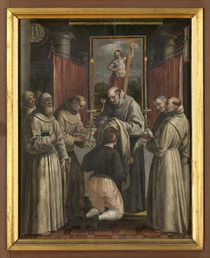The Catholic Defender: Visitation of the Blessed Virgin Mary
- Donald Hartley

- May 30
- 4 min read
Updated: Jun 1
Deepertruth with special permission and aid with Franiciscan Media, a great team for the Lord

Opening Prayer: Let us pray: All-powerful God, whose mercy is never withheld from those who call upon you in hope, look kindly upon our loved one(s), who has/have departed from this life, believing in you; number him/her/ them among the blessed, for evermore. We ask this prayer through Christ our Lord. Amen.
Magnificat and the Hail Mary, two prayers from this feast.
From the moment John the Baptist was conceived, the angel already told Zechariah (Elizabeth's husband) that the Holy Spirit would fill his son even from his mother's womb. This is the significance of Mary's visit to Elizabeth.
In Christianity, the Visitation is the visit of Mary, who was pregnant with Jesus, to Elizabeth, who was pregnant with John the Baptist, in the Gospel of Luke, Luke 1:39–56.
Celebrated on May 31, the Feast of the Visitation of the Blessed Virgin Mary commemorates the Virgin Mary's visit to her cousin, Elizabeth. The meeting of these two women was a joyful and unique event.
This is a fairly late feast, going back only to the 13th or 14th century. It was established widely throughout the Church to pray for unity. The present date of celebration was set in 1969, in order to follow the Annunciation of the Lord and precede the Nativity of Saint John the Baptist.
Like most feasts of Mary, it is closely connected with Jesus and his saving work. The more visible actors in the visitation drama (see Luke 1:39-45) are Mary and Elizabeth. However, Jesus and John the Baptist steal the scene in a hidden way. Jesus makes John leap with joy—the joy of messianic salvation. Elizabeth, in turn, is filled with the Holy Spirit and addresses words of praise to Mary—words that echo down through the ages.
It is helpful to recall that we do not have a journalist’s account of this meeting. Rather Luke, speaking for the Church, gives a prayerful poet’s rendition of the scene. Elizabeth’s praise of Mary as “the mother of my Lord” can be viewed as the earliest Church’s devotion to Mary.

As with all authentic devotion to Mary, Elizabeth’s (the Church’s) words first praise God for what God has done to Mary. Only secondly does she praise Mary for trusting God’s words.
Then comes the Magnificat (Luke 1:46-55). Here, Mary herself—like the Church—traces all her greatness to God.
One of the invocations in Mary’s litany is “Ark of the Covenant.” Like the Ark of the Covenant of old, Mary brings God’s presence into the lives of other people.
As David danced before the Ark, John the Baptist leaps for joy. As the Ark helped to unite the 12 tribes of Israel by being placed in David’s capital, so Mary has the power to unite all Christians in her son.
At times, devotion to Mary may have occasioned some divisiveness, but we can hope that authentic devotion will lead all to Christ and therefore, to one another.
Mary inspires us to live a life full of gratitude, generosity, compassion and hope, so that we may return to god, with interest, all the gifts he has given us.
So there you have it: three simple but very important lessons from the Visitation: Real love is self-sacrificial; what's in the womb after conception is a human life; and we're called as Christians to bring Jesus to others (like Mary did) and to recognize the presence of Jesus in others (like Elizabeth did).

It's no wonder, then, that the imitation of Mary's evangelical virtues has long been regarded as a sure way to Christian perfection. The virtue associated most closely with her is purity. But her faith, obedience, love, and poverty also come readily to mind.
To reflect on this great moment in history, here are 3 practical lessons we can learn from Mary:
Be prepared to be used by God. As an unmarried young woman from Nazareth, Mary has a very low social status, but God doesn't care about that. ...
Put your faith in God. ...
Live your life as a servant of the Lord.
Almighty and ever-living God, who while the Blessed Virgin Mary was carrying your Son in her womb, inspired her to visit Elizabeth, grant us, we pray, that, faithful to the promptings of the Spirit, we may magnify your greatness with the Virgin Mary at all times.
The visitation takes place before the funeral, often the afternoon or evening before. The family invites people to drop by within a certain period to offer support and condolences. It's less formal than a funeral so it gives people a chance to chat. They might share fond memories and anecdotes of the deceased.
The four Marian dogmas of Mother of God, Immaculate Conception, perpetual virginity, and Assumption form the basis of Mariology. However, a number of other Catholic doctrines about the Virgin Mary have been developed by reference to sacred scripture, theological reasoning and church tradition.
Mary's essential vocational calling is her fidelity to family and living the call to motherhood. She loved, honored and served Joseph and Jesus in the home at Nazareth and beyond. She is our mother and model, for all families, through all generations.
The Visitation reminds us that Mary will abide with us in prayer—and with Mary comes the presence of God. When we greet her, she greets us in return. You must know that when you “hail” Mary, she immediately greets you!…she is utterly courteous and pleasant.





















Comments